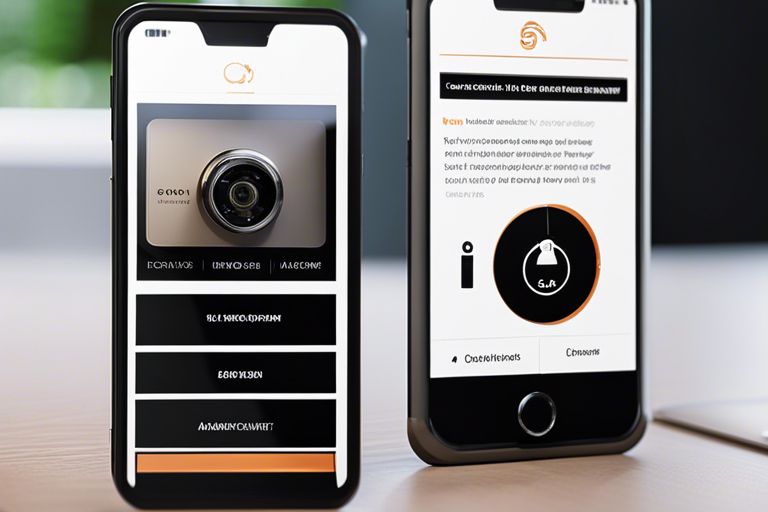Ensuring the security of your development processes is paramount in today’s digital landscape. Conducting regular audits is a crucial step towards identifying and addressing any vulnerabilities that could compromise the integrity of your systems. In this guide, we will provide you with a comprehensive overview of the steps involved in conducting a secure development audit. By following these expert insights and best practices, you can fortify your defences and safeguard your organisation’s valuable assets from potential security breaches.
Key Takeaways:
- Understand the Process: Ensure a thorough comprehension of the software development process to conduct an effective secure development audit.
- Identify Risks: Pinpoint potential threats and vulnerabilities in the code, architecture, and processes to enhance security measures.
- Utilise Tools: Employ industry-standard tools and techniques to automate the audit process and streamline security evaluations.
- Collaborate with Teams: Work closely with developers, QA teams, and stakeholders to integrate security checks into the development lifecycle.
- Stay Updated: Continuously update your knowledge of security best practices and emerging threats to keep the audit process relevant and robust.
Preparing for the Audit
Understanding the Audit Scope
Before beginning a secure development audit, it is crucial to define the scope of the audit. This involves determining the systems, applications, databases, and processes that will be included in the audit. Understanding the audit scope helps in setting clear objectives and ensures that the audit focuses on the critical areas of your development environment.
Assembling the Audit Team
Assembling the audit team is a vital step in conducting a secure development audit. The team should consist of individuals with expertise in security, development, and compliance. It is important to have a diverse team that can provide different perspectives and insights into the various aspects of the development process. Assigning roles and responsibilities clearly within the team will help streamline the audit process and ensure comprehensive coverage.
Conducting the Audit
Reviewing the Development Process
When conducting a secure development audit, reviewing the development process is crucial. This involves analysing the methodologies, tools, and practices used by the development team to build and deploy the application. By assessing the development process, you can identify any weaknesses or vulnerabilities that may exist.
Examining the Security Policies and Procedures
Examining the security policies and procedures in place is imperative to ensuring a robust security posture. This includes reviewing policies related to access control, data protection, incident response, and more. By examining these policies and procedures, you can determine if they align with industry best practices and regulatory requirements.
It is important to check if the security policies and procedures are up to date and well-communicated across the organisation. Regular training sessions and awareness programmes can help ensure that all employees are aware of their responsibilities when it comes to security.
Assessing Risk Management Practices
Assessing the risk management practices of an organisation is a fundamental aspect of a secure development audit. This involves identifying potential security risks, evaluating their likelihood and impact, and implementing controls to mitigate these risks. By assessing risk management practices, you can ensure that the organisation is proactively managing security threats.
Regular risk assessments should be conducted to stay abreast of evolving threats and vulnerabilities. It is important to involve stakeholders from different departments to get a comprehensive view of the risks that the organisation faces.
Evaluating Security of the Code Base
Another critical aspect of conducting a secure development audit is evaluating the security of the code base. This involves reviewing the code for security vulnerabilities, such as injection attacks, cross-site scripting, and insecure dependencies. By evaluating the security of the code base, you can identify and remediate any potential security flaws before they are exploited by attackers.
Tools such as static code analysis, penetration testing, and code review sessions can be employed to assess the security of the code base thoroughly. It is also advisable to implement secure coding practices and conduct regular code audits to maintain a secure code base.
Tips for Efficient Audit Execution
When conducting a secure development audit, efficiency is key to ensuring a thorough and effective assessment. To streamline the audit process, it is important to plan ahead, communicate clearly with the development team, and leverage automation tools where possible. Additionally, allocating sufficient time and resources for the audit can help uncover hidden security issues.
- Regular communication with all stakeholders is crucial to gather necessary information and address any concerns promptly.
- Thorough documentation of findings and recommendations is imperative to track progress and ensure follow-up actions are taken.
Post-Audit Activities
Analysing Audit Findings
After conducting a secure development audit, it is crucial to analyse the findings meticulously. This involves identifying vulnerabilities, security gaps, non-compliance issues, and any other potential risks that were uncovered during the audit process.
Reporting and Communicating Results
Reporting and communicating the results of the audit is vital for ensuring that all stakeholders are aware of the security posture of the software development process. This involves preparing detailed reports highlighting the findings, recommendations for improvement, and any remediation plans that need to be implemented.
Effective communication is key in this phase to ensure that all parties understand the implications of the audit findings and the importance of taking action to address any identified issues promptly.
Factors for Effective Remediation Plans
When creating remediation plans based on the audit findings, certain factors need to be considered to ensure their effectiveness. These factors include the severity of the vulnerabilities, the resources available for remediation efforts, the timeline for implementation, and the expertise of the team tasked with carrying out the remediation.
- It is vital to prioritise the vulnerabilities based on their impact on the security of the software.
- Consideration should be given to allocating adequate resources for remediation efforts.
- Any delays in implementing remediation plans could expose the software to further risks.
Any lapses in addressing the identified vulnerabilities could leave the software exposed to potential security breaches, making it crucial to follow through on the remediation plans diligently.
Maintaining Continuous Security Assurance
Integrating Security into the Development Lifecycle
Integrating security into the development lifecycle is crucial for ensuring that security measures are implemented from the onset of a project. By incorporating security practices such as code reviews, threat modelling, and security testing at each stage of development, teams can proactively identify and address security vulnerabilities early on.
Regularly Scheduling Security Audits
Regularly scheduling security audits is important in maintaining continuous security assurance for your software. By conducting periodic security audits, you can identify and rectify security issues before they escalate into major problems. It allows you to stay on top of evolving threats and ensure that your software remains secure against new vulnerabilities.
Conducting a Secure Development Audit
Conducting a secure development audit is crucial to identify vulnerabilities and ensure the robustness of your software. By following a structured approach that includes assessing coding standards, architecture, and security practices, organisations can strengthen their defences against potential cyber threats. It is important to involve developers, security experts, and stakeholders to conduct a thorough audit that addresses all facets of secure development. Regular audits not only help in identifying existing vulnerabilities but also in preventing future security breaches, ultimately safeguarding sensitive data and maintaining trust with users.
FAQ
Q: What is a secure development audit?
A: A secure development audit is a comprehensive assessment conducted to evaluate the security of software or application development processes, code, and practices.
Q: Why is conducting a secure development audit important?
A: Conducting a secure development audit is important to identify and address security vulnerabilities early in the development lifecycle, ensuring that the final product is robust and secure.
Q: What are the key components of a secure development audit?
A: Key components of a secure development audit include code review, vulnerability assessment, threat modelling, compliance checks, and security architecture evaluation.
Q: Who should be involved in a secure development audit?
A: A secure development audit should involve a team of experienced security professionals, developers, architects, and project managers to ensure a comprehensive evaluation of the development process.
Q: How often should a secure development audit be conducted?
A: Secure development audits should be conducted regularly throughout the software development lifecycle, ideally at key milestones such as project initiation, code completion, and before product release to maintain a high level of security assurance.






